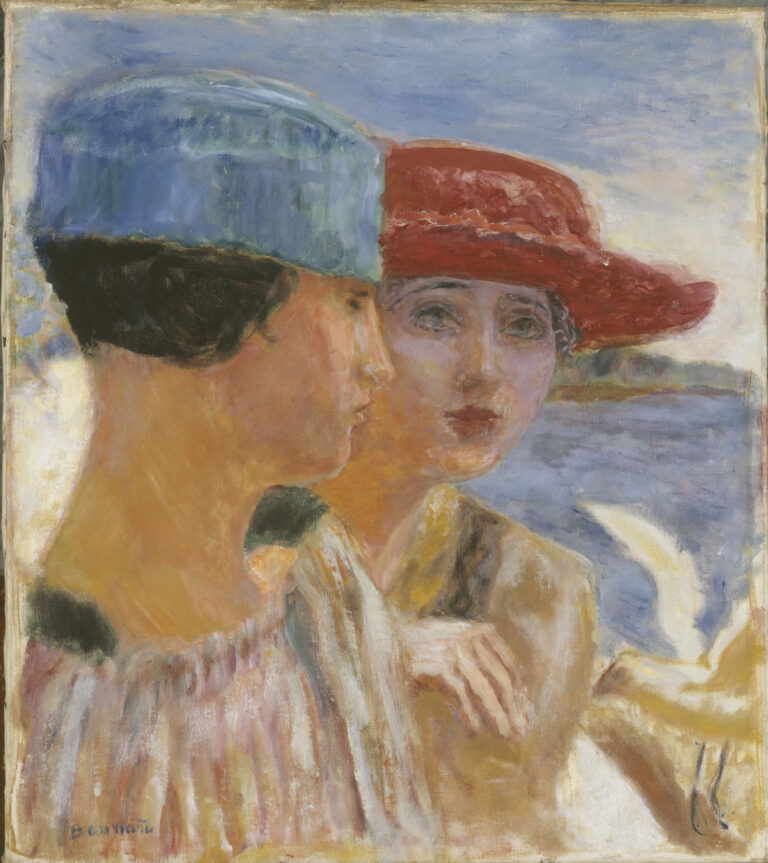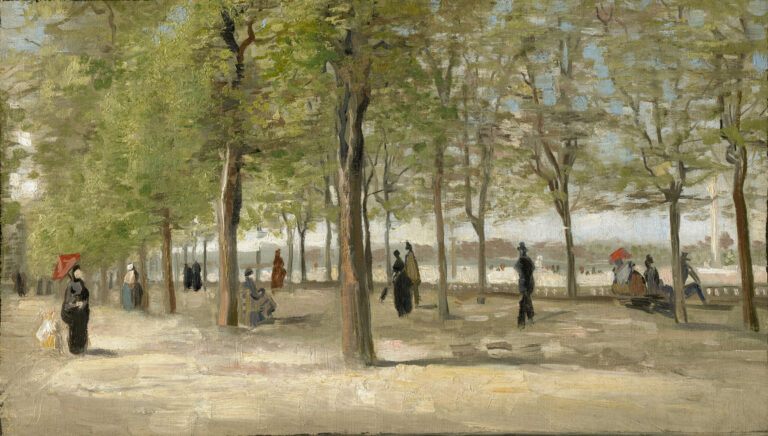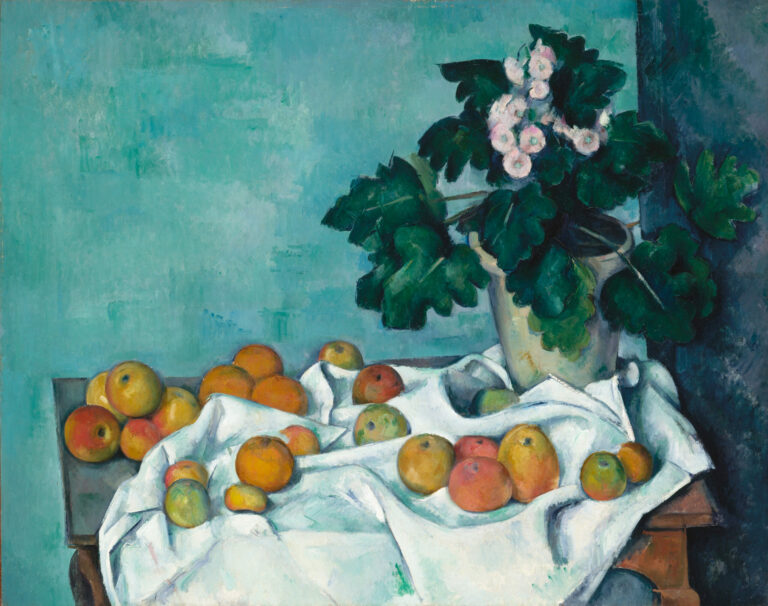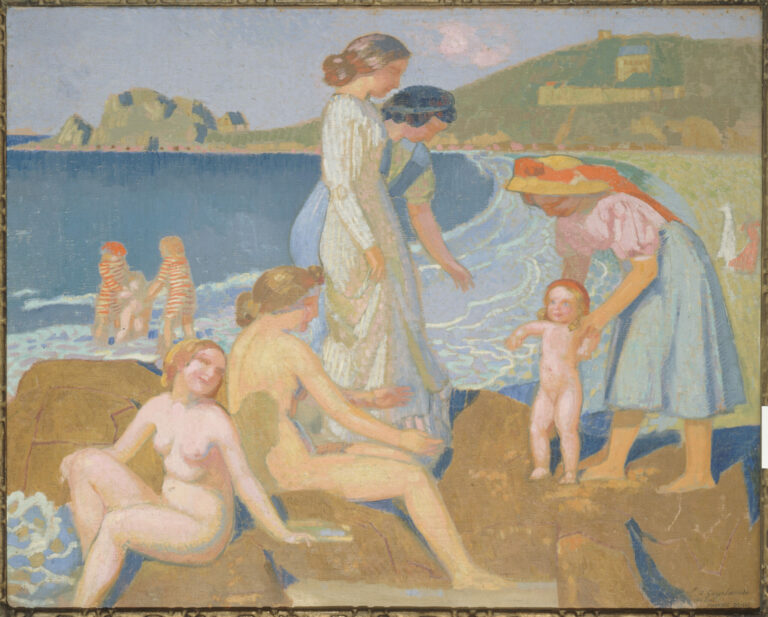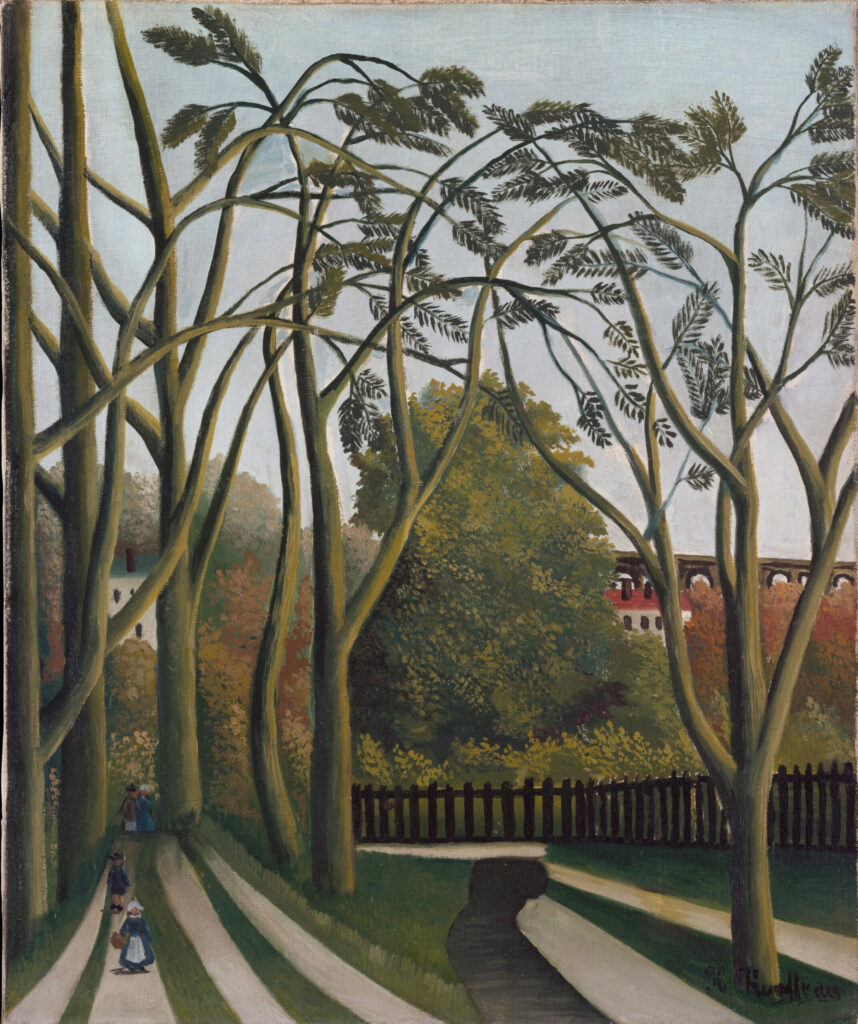
The Banks of the Bièvre near Bicêtre reveals the singular art of the Douanier Rousseau around 1908-1909, a poetic testimony to a Parisian landscape that has now disappeared.
This work, documented by a handwritten note from the artist dated 1909 when it was put up for sale at Vollard’s, captures the bucolic surroundings of Bicêtre, a working-class neighborhood on the southern outskirts of Paris. Rousseau transforms this site into an idyllic vision, where the Bièvre—then polluted but still offering picturesque vistas—meanders peacefully under a luminous sky. The architecture of the 17th-century Arcueil aqueduct appears in the background, while in the foreground, trees with slender trunks and delicate foliage frame the composition. The silhouettes of strollers animate the path on the left, lending a human dimension to this suburban landscape. Rousseau’s naïve technique, characterized by precise contours and pure colors, transforms this popular reality into an enchanted vision, a nostalgic testimony to a Paris in transformation.
Further information
- The Banks of the Bièvre near Bicêtre, by Henri Rousseau (le Douanier), circa 1908-1909
- 54.6 x 45.7 cm (21 1/2 x 18 in.), oil on canvas
- The Metropolitan Museum of Art, Fifth Avenue, New York, displayed in gallery 825
- https://www.metmuseum.org/art/collection/search/437512
Henri Rousseau known as le Douanier (1844-1910), emblematic figure of French naïve art, revolutionized modern painting through his brilliant autodidact’s vision. An employee of the Paris customs service and then retired from 1893, he devoted himself entirely to painting without academic training. His unique style, characterized by meticulous precision, singular perspectives and overflowing imagination, fascinated the Parisian avant-garde. Discovered by Picasso and the Fauves, admired by Kandinsky, Rousseau embodied alternative modernity, proving that authentic art transcends academic conventions to achieve universal poetic truth.

